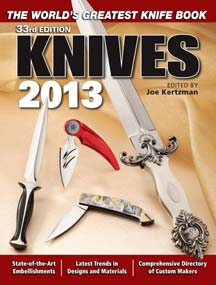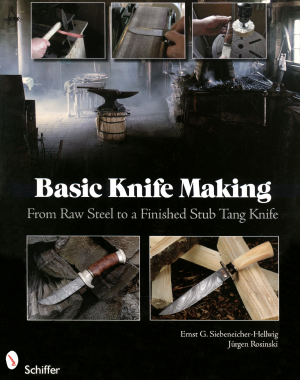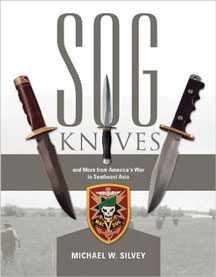- You cannot add "Sheffield Exhibition Knives by Claussen et al." to the cart because the product is out of stock.
Knives 2013 edited by Joe Kertzman
$29.95
The 33rd annual edition of everyone’s favorite guide to handmade knives, their makers, suppliers and other aspects of the knife world. Softcover, 312 pp.
Description
The 33rd annual edition of everyone’s favorite guide to handmade knives, their makers, suppliers and other aspects of the knife world.
KNIVES 2013 is the source for photos, addresses, and information on your favorite custom and factory knives, as well as a selection of articles from the best writers in the business. Includes a complete directory of custom knifemakers, supply houses, knife manufacturers and importers, and other knife related businesses such as photographers and engravers.
Returning this year: over 800 FULL COLOR photos!
Knives 2013
Tips for Knifemakers – A Collector’s Perspective Roger Pinnock
Latest Friction Folders are Freaky Good! Michael Burch
Arms of Malta … Sally Forth Into Pitched Battle James Morgan Ayres
Fat Times for Slip-Joint Followers Pat Covert
The Knifemakers’ Guild – A Strong Alliance of Independent Artists Kevin Hoffman
Art Knives as Investments Don Guild
Large Folding Hunters Swallow the Hand Richard D. White
The Knife Aquatic Mike Haskew
Formidable Tactical Folders Dexter Ewing
“Big” is in the Blood of the Claymore User Greg Bean
BOOK REVIEW
Reviewed by Mac Overton
We’ve had plenty of sunshine here in East Texas this summer, with lots of blistering heat. But September brought not only the official beginning of Fall and a return to Friday night high school football (usually a harbinger of soon-coming more-pleasant weather), but a true ray of sunshine for the knife lover – the publication of the 33rd edition of the self-proclaimed “World’s Greatest Knife Book,” Knives 2013.
Here, in one source, are feature articles, penetrating analysis of trends and the state of the art in the knife field, and invaluable, extensive reference guides to makers, marketers, importers and manufacturers.
A glance at features showed me that Joe was kind to “traditionalists” like me this year. Among the 10 features that comprise some 50 pages of the book are some devoted to slip-joint folders, large traditional folders, and “friction-folders.” The last, perhaps the oldest folder style, has been brought back in high-tech versions, which are introduced in “Latest Freaky Folders Are Freaky Good.” This type has no spring or lock, and relies on the user’s grip to keep the blade open. The “Frikky” by Brian Felihoelter, a friction folder designed to fit into a coin pocket, is one I would like to try. The “flipper,” an extension of the back of the blade, contains a built-in bottle opener.
The “traditional” feature on Large Folding Hunters basically shows “classic” knives from the past, but the current knife user can read it and find similar models available today.
Collectors get some good advice from features on “Tips for Knifemakers – A Collector’s Perspective,” and “Art Knives As an Investment.”
“Trends” are bunched together in the next 70-some pages, making it convenient to keep up with the latest goings-on in knife design and development.
Topics well-covered here include the following: • Far-Eastern influence
• Authentic-looking bowie knives of various interpretations, all looking vintage.
• Many pages of big folders for the 21st Century, some of them with embellishments that have to be seen to be appreciated.
• As previously mentioned, I am a traditionalist, and “Finger Nick’n Good” was extremely satisfying with modern pocket knives in classic patterns, reinterpreted with new curves and, sometimes, new handle materials for the 21st Century. The punnish name comes from all the blades shown having old-fashioned nail nicks to use to pull them open.
• Most-any serviceman would be proud to carry any of the “Edged Combatants,” fixed-blade knives designed for last-ditch fighting and/or survival.
• “American Stickers… One Knife from Each of the 50 States” is just that – a melting pot of blades, including both folders and fixed-blades, showcasing the diversity that exists in different interpretations of man’s oldest tool.
• A lover of exotic wood handles on knives, I was really excited to see “Runaway Grains,” and some of the infinite variety of woods of the world, and think back to woods that were offered in Morseth and Gil Hibben catalogs in the 1960s which happened appeared for some time, such as purple heart and vermilion. The subject justifies the seven pages devoted to it.
• “Channeling Loveless” shows 10 knives by seven makers which are unabashedly influenced by the late, great master Loveless.
• Bowie lovers get another treat as they peruse the seven pages devoted to “Blow-The-Door-Hinges-Off bowies. Whether interpreted in stainless or traditional carbon steel, these give a “you-are-there” feeling that one of these, any one, would have served you well at the Alamo or at Gettysburg.
• “Camp Grinds” shows that big knives can also beg to be used.
• “Milky Mammoth and Mastodon Ivory” shows it would be possible to build a collection of fossil ivory-handled knives, with two never looking the same. The fossilized ivory picks up minerals and impurities from the surrounding earth, coloring each piece distinctly and differently.
• “Easy-Handlin’ Hunters” shows that tradition still lives here, too. There is a reason for all the “old-fashioned” blade styles in these pages: They work, just as they have for thousands of years.
• Those into swords, tomahawks and other Native American-styled weaponry, traditional stag handles, and the latest wave of fighting knives will also have much to enjoy, and the Art section will feed the desires of those who don’t mind spending as much for a knife as a pretty good used car would cost.
There’s more, much more, as owners of previous editions have come to expect. All-in-all, the book is another masterful achievement from Kertzman.
Softcover, 312 pp.





Reviews
There are no reviews yet.